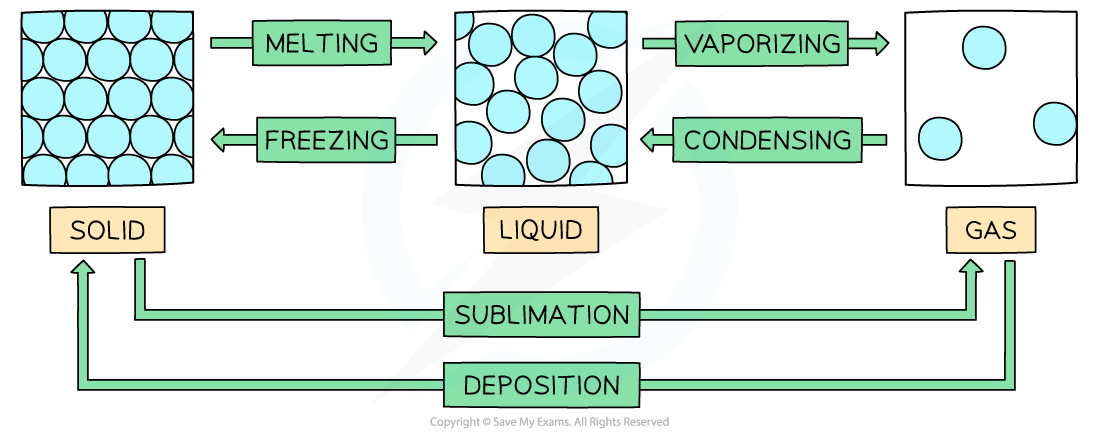State Changes
- Changes of state are physical changes that are reversible
- These changes do not change the chemical properties or chemical makeup of the substances involved
- Vaporization includes evaporation and boiling
- Evaporation involves the change of liquid to gas, but unlike boiling, evaporation occurs only at the surface and takes place at temperatures below the boiling point
- Boiling occurs at a specific temperature and takes place when the vapour pressure reaches the external atmospheric pressure

State Changes
- The relationship between temperature and energy during state changes can be represented graphically

The relationship between temperature and energy during state changes
- Between 1 & 2, the particles are vibrating and gaining kinetic energy and the temperature rises
- Between 2 & 3, all the energy goes into breaking bonds – there is no increase in kinetic energy or temperature
- Between 3 & 4, the particles are moving around and gaining in kinetic energy
- Between 4 & 5, the substance is boiling, so bonds are breaking and there is no increase in kinetic energy or temperature
- From 5 & 6, the particles are moving around rapidly and increasing in kinetic energy
Exam Tip
Be careful to match the bond breaking or making processes to the flow of energy during state changes. Remember that to break bonds, energy is always needed to overcome the forces of attraction between the particles
